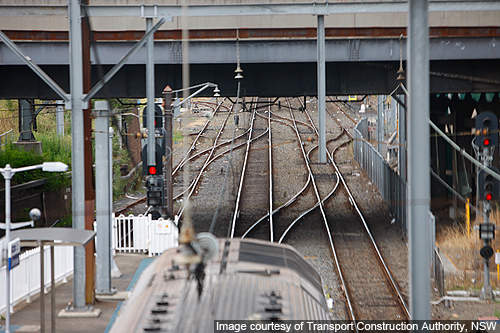The Liverpool Turnback project has added a 1.8km section of new track, and a new platform to Liverpool Station, Sydney. The initial works on the project commenced in October 2010 and the project was completed in early 2014.
The Transport Construction Authority (TCA), formerly Transport Infrastructure Development Corporation, engaged John Holland to construct the project. Engineering design services were carried out by KBR.
Sydney’s public transport service is the largest in the country, public transport operators in NSW carry over 2m passengers each weekday on rail, bus, ferry and taxi services. Around 72% of trips to the Sydney CBD each weekday are made using public transport.
Transport NSW is the main public transport agency of the NSW Government, with primary responsibility for transport policy, planning and coordination as well as oversight of infrastructure delivery and asset management.
Project background
The Liverpool Turnback Project is a part of the Rail Clearways Program, a NSW Government initiative to improve capacity and reliability on Sydney’s metropolitan network.
The Rail Clearways Program was concluded with the completion of the Liverpool Turnback Project, which ensures that an incident on one part of the rail network will have a limited effect on services in other parts of the network.
The Rail Clearways Program also increased the capacity of the CityRail network to meet continuing demand growth from both suburban and intercity areas.
The construction phase of the Liverpool Turnback Project followed the public exhibition of the Review of Environmental Factors (environmental impact assessment document), consultation with the community and preparation of a Submissions Report responding to submissions received during the public exhibition.
Liverpool Turnback project
The new 1.8km track was laid between Liverpool Boys High School and the Shepherd Street viaduct. Other significant activities at the station included construction of a new side platform (Platform 4), extension of the existing overhead concourse, construction of stairs, extension of an existing footbridge, installation of a new lift, and upgrades to power, lighting and communications systems.
The project also included construction of two new mainline turnouts, minor reconfiguration of the existing train stabling facilities, new walkways for the reconfigured stabling yard, lighting and cleaners facilities. A new RailCorp vehicle access road and associated retaining walls were constructed under the new Down Main to maintain access to the existing stabling yard, and car parking facilities were also provided for RailCorp staff.
New track configuration and connections to existing track were provided with new overhead wiring (OHW). The existing OHW infrastructure was relocated and modified where necessary. The signal panel at Liverpool was upgraded and the existing services were protected.
Infrastructure
The Liverpool Station services the Bankstown, South, Inner West and Cumberland Lines.
Freight and country passenger services also operate through the station. The additional platform and track constructed at Liverpool Station help to keep trains running to timetable and reduce delays by separating, terminating or commencing rail services from some trains.
Additionally, the project enables an increase in the number of services terminating at the station during peak and some off-peak periods.
It is expected that the demand for train services will increase in the future due to population growth in the south-west corridor and with the current configuration it is very difficult to increase the number of services during peak periods.
Project benefits
The project provides a more flexible and reliable turn back facility for local trains servicing the Bankstown, South, Inner West and Cumberland lines.
The project allows for increase in the number of terminating trains at Liverpool Station and provides additional capacity for onward services.
The project also provides for the independent operation of the stabling facilities and the main line services, which reduces congestion and limits the impacts of delays on the rail network.




